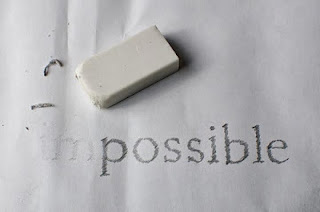The first (and annual anniversary) of Spring, my arrival anniversary day in Vancouver, and the first of a TED conference (celebrating its 30th anniversary) at the Vancouver Convention Centre in BC, all in the same week.
The week-long TED Conference is a conglomerate of visionaries, philanthropists, and successful entrepreneurs and entertainers who share the same stage to inform and inspire not only the 1,200 attendees at the inaugural Vancouver event, but also those at venues where live web streams are broadcast. "Ideas worth spreading", TED's motto, whether informative/insightful/intriguing/inspirational through Technology, Entertainment, and Design (TED) is what it's all about.
I was grateful to be able to witness a few of these due to live broadcasting. One such striking presentation included as part of its initial delivery, "The body is not broken. Technology is broken." in referring to physical disabilities by an American bionics designer and double amputee survivor, Hugh Herr.
During one of his rock climbing ventures, Hugh experienced severe frostbite in his lower limbs, below the knees. Since then, he has designed leg prostheses and orthoses that enabled him to rock climb with greater ease using a combination of (bio)mechanics, design, and electrical (nervous) systems to emulate the body's movements and functioning.
Another groundbreaking design with Hugh and a team from The Center for Extreme Bionics led to the creation of a prosthetic leg for Adrianne Haslet-Davis, a Boston-bombing survivor, that allowed her to re-pursue her passion of ballroom dance. (Google either of their names as the links with her dancing seems to not work.)
I checked this next one online as I read "cellist and beatboxer" on the website schedule. It features an African-American, beat-boxing cellist named Kevin Olusola or as he terms "cello beatboxing" combining classical music with a hip hop rhythmic beat. How cool is that?!
I love TED, TED 'talks' that is as I love to learn and to be inspired. But then who doesn't? I also LOVE out-of-the-box thinking and creativity such as that which both Hugh Herr and Kevin Olusola demonstrate.
How can you think outside the box? How can you contribute to the betterment of society?
The week-long TED Conference is a conglomerate of visionaries, philanthropists, and successful entrepreneurs and entertainers who share the same stage to inform and inspire not only the 1,200 attendees at the inaugural Vancouver event, but also those at venues where live web streams are broadcast. "Ideas worth spreading", TED's motto, whether informative/insightful/intriguing/inspirational through Technology, Entertainment, and Design (TED) is what it's all about.
I was grateful to be able to witness a few of these due to live broadcasting. One such striking presentation included as part of its initial delivery, "The body is not broken. Technology is broken." in referring to physical disabilities by an American bionics designer and double amputee survivor, Hugh Herr.
During one of his rock climbing ventures, Hugh experienced severe frostbite in his lower limbs, below the knees. Since then, he has designed leg prostheses and orthoses that enabled him to rock climb with greater ease using a combination of (bio)mechanics, design, and electrical (nervous) systems to emulate the body's movements and functioning.
Another groundbreaking design with Hugh and a team from The Center for Extreme Bionics led to the creation of a prosthetic leg for Adrianne Haslet-Davis, a Boston-bombing survivor, that allowed her to re-pursue her passion of ballroom dance. (Google either of their names as the links with her dancing seems to not work.)
I checked this next one online as I read "cellist and beatboxer" on the website schedule. It features an African-American, beat-boxing cellist named Kevin Olusola or as he terms "cello beatboxing" combining classical music with a hip hop rhythmic beat. How cool is that?!
I love TED, TED 'talks' that is as I love to learn and to be inspired. But then who doesn't? I also LOVE out-of-the-box thinking and creativity such as that which both Hugh Herr and Kevin Olusola demonstrate.
How can you think outside the box? How can you contribute to the betterment of society?

